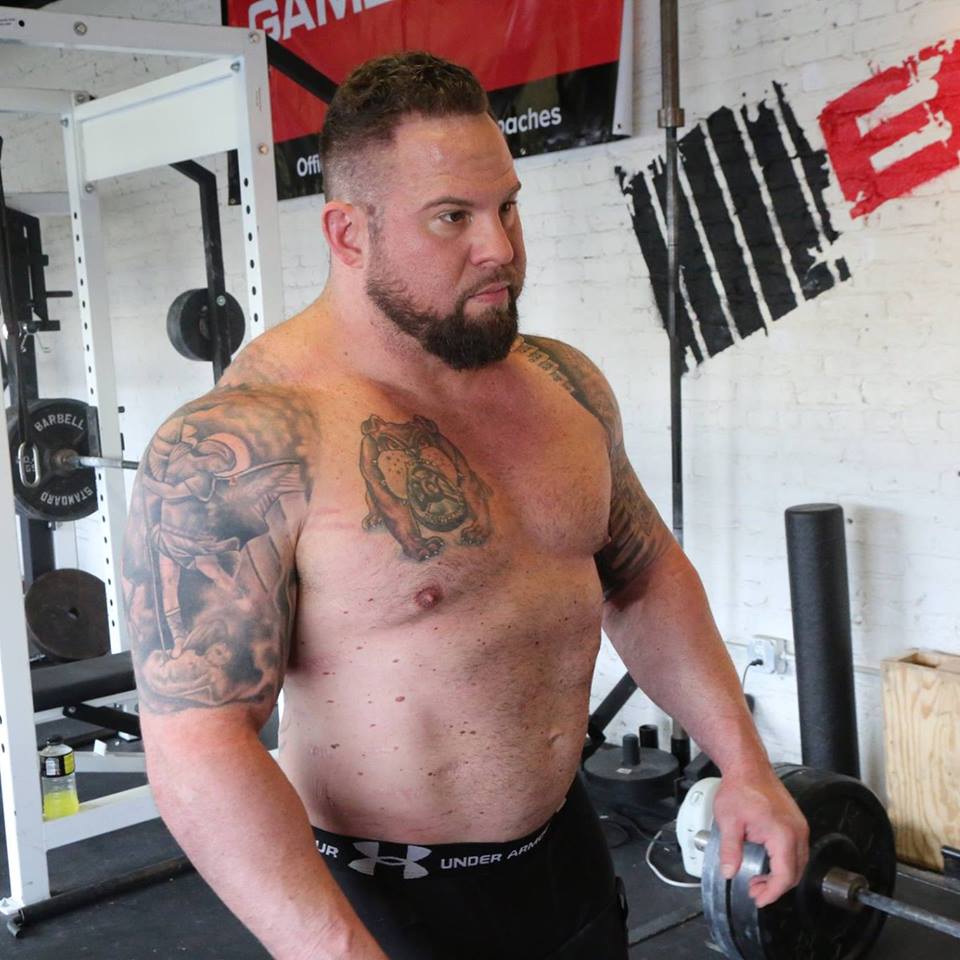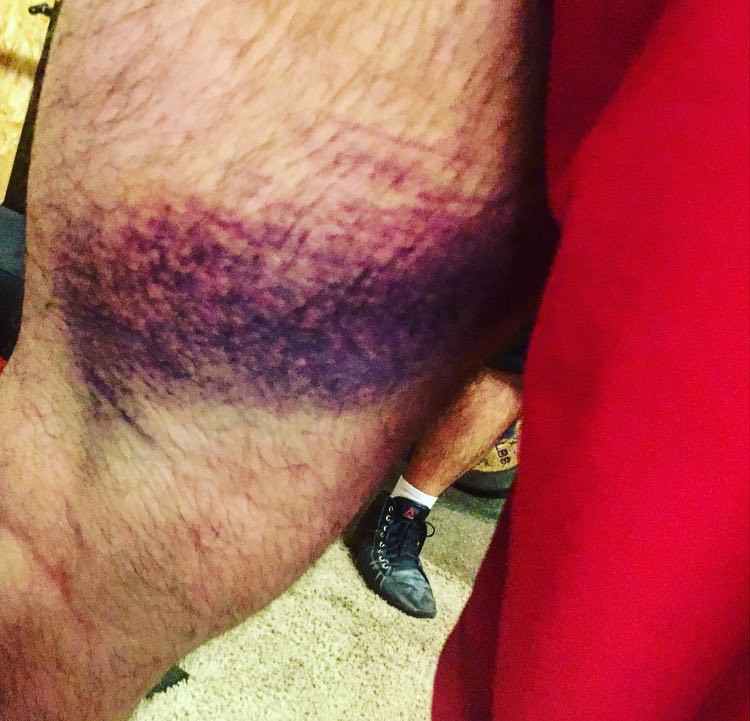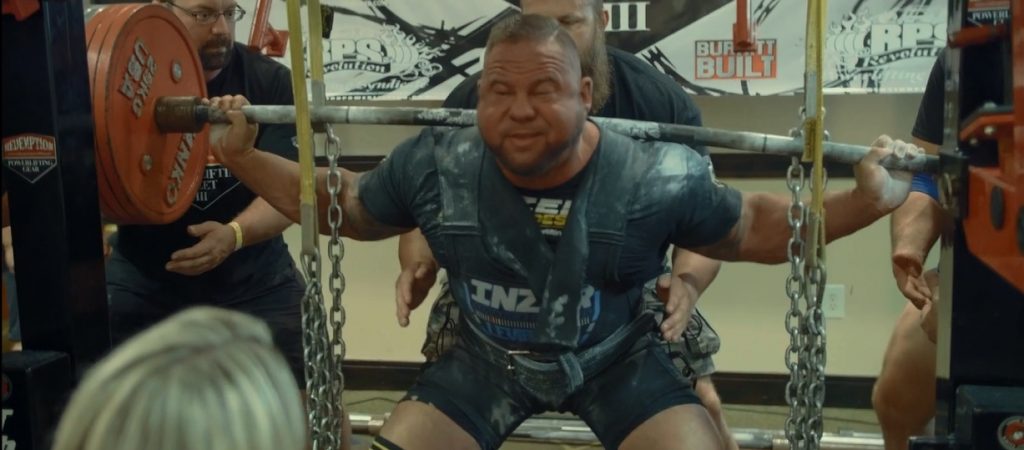
17 Sep Therapy – taking care of your priceless and limited resource
By Brian Carroll
Strength athletes: What are you doing outside of the gym to help ensure a successful and as injury free career as possible? Are you taking care of the tangibles within your control? For the sake of this article, I’m going to get right to the point about something precisely in mind as I have been seeing many athletes, (including myself), some close to me on my team fall victim. Once you get behind the 8-ball, it’s not fun to play catch up and make up for lost time.
Now, before you say it: Yes, taking care of your body takes time, commitment and money. So does everything else that’s worth having. The problem is the same ‘athlete’ will blow money on ten pairs of shoes they will never or hardly ever wear, $7 coffee daily, $3 soda when they go out to eat (all the time), $300 cable bills and generally on the things they ‘want,’ not necessarily what they ‘need.’ It’s just not much of a priority to many.
Your body is a very limited resource and is something you should take care of – You only get one.
Background
From 2003 – 2013 I worked as an LMT. Sometimes full-time, at times a part-time massage therapist, so I’ve had a lot of experience both on the table and doing bodywork. During this period, I didn’t always take advantage of what was literally right in front of me. But when I did, I benefitted from this and learned a great deal about what works and what doesn’t from both clients and myself in treatment.
I’ve also made many mistakes as I discuss in Gift of Injury and 10/20/Life.
For the last five years, I make it a priority to focus on getting daily and weekly therapy. It comes in forms of core work, walks, customized and specific mobility work (when necessary for ROM), specialized foam rolling on particular muscle groups (for me lats and quads), PNF stretching (when essential for ROM – thoracic for me), breathing exercises/techniques, prayer/meditation, STIM, massage therapy, Graston, ultra-sound, ART, adjustments, avoid inflammatory foods (something that I’m still honing in) drinking plenty (enough) water, taking naps and getting plenty of rest overall, etc. These moving parts are all within your control and things that only cost your time and a little self-education.

Who and why – Find a clinician above and beyond your daily self-maintenance
Those who put immense effort into lifting/strength training should, in most cases be getting proactive therapy done before it becomes an issue and almost certainly if there is an injury history. I don’t ever like to say always or never. This ‘therapy’ is above and beyond the daily “self-care.” But, please make sure the practitioner knows what your sport is, the demands and that your needs will be unique to most of their clients.
What I am NOT saying is that as a strength athlete you should be loose and mobile and get bodywork for this reason. What I am saying is you need to have a proper ROM to meet the unique demands of your sport, and nothing more. Which, honestly is not very much for powerlifting and strength sports in general. In most cases, avoid any form of “Stretching Therapy” as arbitrarily increasing mobility has shown to be not only counterproductive for strength/performance, but can also lead to joint destabilization and injury. Most mobility cures can be achieved by simply working the ROM necessary and slowly fine-tuning it, i.e., Goblet squat working down in the “hole” to open up the hips a bit. You must ride the fine line, just like everything in life. You’re a strength athlete, not a gymnast. So, again, I’m not telling you to become limber, I am, however, telling you to address issues that may inhibit proper ROM and or any warning signs as they come to stay ahead of the “big ones”(like my back).
Don’t fall for it
Complacently is the enemy of progress. I have fallen into the common trap of “I feel good this week I don’t need to go see my therapist; I’ll save the money this week.” And every single time without fail, I have a flare up or set-back of some kind. Sometimes minor, even if it’s just some added stiffness in the wrong area but sometimes much more. I’ve learned the hard way: pain. Pain makes me remember as the following weeks of torture while having to address the issues I let fester as I’m screaming on the table while lats or quads are like concrete, with trigger points all over. I’m also not saying treatment should be excruciatingly painful all the time, but once the tissue is warm, the therapist/practitioner will need to address the issue and ‘get to it.’ Sometimes it will hurt, it will suck, but they should NOT be trying to destroy you for the sake. Again, it will typically toe the fine line of almost too much, but not too much or as what we were taught in school as “the edge” of your threshold, without going over.
Or worse, since I skipped the session I get a tweak or develop some broad issues that tend to snowball. I get so pissed at myself and the inconvenient tweak or injury that it is yet a deeper groove in my memory to not let it happen again. I can remember calling teammates (so angry & disgusting with myself) after a session where my legs got murked 100%, and I deserved it because I got lazy. Eventually, I get back on track where I rarely miss. I understand it, it’s hard to stay on track, but proper planning is vital. I get it. It’s life – you will miss sessions at times with travel and other commitments, but the key is this needs to be a priority. You know the difference; make much more than you miss.

If you’re hurting, you waited until it was too late
If you are serious about strength training, you need more than a modicum of self-awareness; a mental checklist that you go through each day; a mini self-assessment before you start training. If you don’t, then you should read no further because you don’t take your training seriously. Often, we know when something is starting to act up, maybe even locked-up or feel ‘off.’ But, the procrastination in us always stays “it can wait.” Well, eventually our body says “NO.” Then, unfortunately, you piss something off and have to do just as many therapy session as you would have if you kept up with it if NOT MORE SESSIONS!
I know a lot of athletes like this who wait until they are hurting to see their massage therapist or practitioner, scrambling weeks before a competition hoping for a miracle fix for something that has been developing for weeks, months even years. Any sensible professional, IMO, will tell you one or all three of these things: 1. I won’t likely fix you in one session and 2. These issues tend to develop over time 3. You need to come in regularly for a while to avoid future flare-ups and become consistent.
Affordability
There are ways to get adequate therapy and to aide overall recovery and accomplishable affordably. Take your provider out to lunch to learn how to self-treat (maybe foam roll or Graston/trigger point work?) your troubled spots as homework. You can YouTube the best in their given field as an example: McGill for Back, Cressey for shoulder, etc., ask around who the best is and seek out and read their materials. Hell, I Graston my forearms with a spoon and coconut oil in the kitchen at times. Self-education is a must. Amazon is your friend, friend. Get their materials. With the amount of FREE information available on the YouTube platform alone and sites like Captainjacked.com and PowerRackStrength.com, there are no excuses.
Receiving services can also be accomplished by trading training/coaching/cueing services (many Chiro/LMT/PT are not savvy trainers/coaches, and you may know more than you think). Find your local massage schools for $20-$30 massages by the students and talk them through it if necessary. Also, exploring ways for your insurance provider to cover your therapy is also an option for some. Trade, save, barter – do what you have to do but get it done.

How often?
I suggest weekly professional treatments, especially if you are at an elder lifter age and a little beat up. If you’re newer to the sport, this will shortly include you to stay ahead of the punishment ahead.
Here’s something: If you have been lifting seriously, aka pushing the limits of your potential you’re likely either pre-habbing, managing or rehabbing an injury; it’s just how it is. There has never been a week where I have plopped on the treatment table and not had something going on, from all the walking I do, my feet, ankles, calves, and shins always need work. So do my head and scalp tension, my neck from sitting at a computer all day, etc. Even if there isn’t anything locked up or tight somehow, it’s great for relaxation to help distress the body a bit. This approach is also how I’m not too beat up for doing this as long as I have; I’ve learned how to relax during my downtime.
Lately, my issue is my shoulder complex and my trap/neck due to an older injury compounding with a more recent injury that I cover in This is 10/20/Life Part 1. I have been so focused on my lower body the last few years, that I’ve times ignored my upper more than I’d like to admit.
Currently, I receive therapy, Tuesday, and Thursday plus what I do at home: Tuesday: NMT (Neuromuscular Therapy) Massage on Neck, traps, rotators, pec, rhomboids, etc., Graston, ART, and some manipulation when necessary. Thursday: Ultra-sound, NMT on whatever is left over from Tuesday and get assigned posture corrective homework that I do every day.
None of this, is, in any way relaxing, fun or remotely enjoyable like a fru-fru Swedish massage at your favorite spa. It’s often very invasive and painful. Even mentally torturous. Ever had your intercostals or psoas stripped? How about a thumb in your subscap or your pec minor tie-in when wholly locked-up and adhered? Not long ago, a trigger point FINALLY released in my pec minor that not only hurt my eye socket like it was broken when pin-pointed but nearly made me barf. I was able to bench four days later, pain-free 100%. It’s pain and adhesion free now, thankfully. Again, I can’t get complacent.
In the past, it was my quads, ITB, TFL, glutes, and hips every single week; as consistently teetering on the cusp of being too tight. There is a reason why I’m an explosive and fast squatter/puller as everything is fine-tuned just for this and loaded like a spring; not to be a mobile ballerina or the deepest squatter on IG.

In closing, not everyone will follow or even give the second thought to these straightforward suggestions. I’ve been consistently getting work every week for the better part of the last ten years, but I can say that I haven’t completely adhered to the little things until about five years ago. I’ve doubled down, even more, the last three years. Now, in 2018 I’m going back over the smallest details to be even more thorough. I’m nearly 20 years in, still learning, adjusting and adapting. It’s a process, but doing nothing will get you out of the sport early.
Just remember, your body doesn’t care if you’re “broke and can’t afford it,” or “don’t have the time.” Your body is very binary: it’s getting what it needs, or it’s not. Some people are plain lazy and not self-aware; everything we do is a deposit in our body’s health account, or a withdraw.
Strength sports are a very unforgiving mountain we climb. We punish ourselves for little to no reward and put our body through hell. We do it because we love it, not because we always enjoy the process. You’ll likely hate it. Sometimes often, but it’s worth it.
Next, I’m going to discuss a couple of new tactics I consistently added to my recovery the last 3-4months. These include CBD (oral paste and massage creme), cupping and the highly controversial cryotherapy. Scratch that; EVERY MODALITY IS CONTROVERSIAL and contingent upon who you ask!
To check out more of Brian’s writing, click HERE and to learn more about the daily modalities Brian spoke about, check out his books Gift Of Injury and 10/20/Life 2nd Edition, as well as Dr. Stuart McGill’s books Back Mechanic and Ultimate Back Fitness and Performance.
Brian Carroll
Latest posts by Brian Carroll (see all)
- Brian Carroll Coaches the Birddog - April 24, 2024
- Protected: -Header Image Post Template 2024 - April 18, 2024
- Brian Carroll X Professor Stu McGill full interview 2024 - April 16, 2024





Sorry, the comment form is closed at this time.